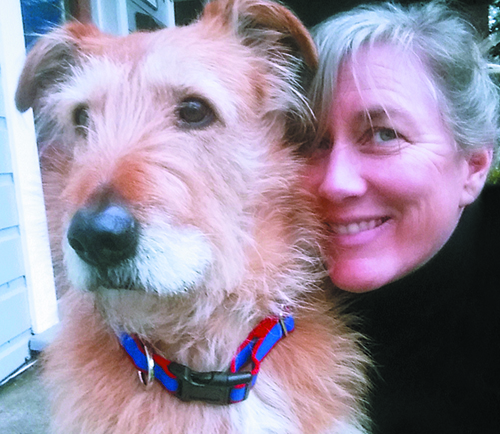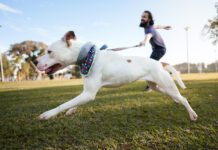For the most part, the articles in WDJ contain information that you can go right out and put into practice – training tips, food-selection suggestions, product reviews, and practical things that you can do improve your dog’s health. While we do have a couple of those in this issue, we also seem to have collected a number of articles that (we hope) will provide you with food for thought, too.
The first article that falls into this latter category, “Howling in the Uncanny Valley”. The article sprang from an online conversation I had with its author, trainer Heather Houlahan, as we commiserated about how much we both hated the computer-generated imagery (CGI) used to wholly create the dog in the new movie The Call of the Wild. The human expressions the movie artists covered the otherwise winsome animated (but real-looking) dog’s face with absolutely gave me the shivers – and not the good kind. Heather and I both felt our skin crawling with revulsion when we saw the CGI dog’s weird gaits and human-looking eyes – yet we know other people who didn’t detect anything wrong with the depiction of the dog at all. When Heather asked me if I’d like her to write an essay expressing why she felt this sort of unreal, sort-of-real-looking dog’s appearance in a popular movie could actually do damage to the human-animal bond, I was more than happy to give her the assignment.
I had never before heard the expression “the uncanny valley” before I received Heather’s piece, and I found it fascinating to follow a number of online links from the Wikipedia.org page that defined the term. The observations made about the creepiness of human-like robots in those articles definitely rang true for me – but even more strongly to the CGI dog in The Call of the Wild than for human-like robots. I’ll be curious to hear what you think about all this.
Another eclectic piece in this issue that I was fascinated by: long-time contributor CJ Puotinen’s article about “conservation dogs” – dogs who are trained to find endangered animals (as well as the poachers who threaten them). The dogs are also used to sniff out invasive plants and animals that threaten native populations and habitats! I’m not exactly sure how many of you will go out and train your own dogs to do work like this – but if any of you want to, there are some stellar role models and organizations mentioned in the article that would provide guidance to do so.
I think it would be the coolest thing ever if one of our subscribers read about this work and was inspired to take it up with their dog. Please let us know if that person is you!






A good article! I’ll read it!
Hello to all
In this enigmatical time, I love you all
Prize your relations and friends
Yeah good article thanks….